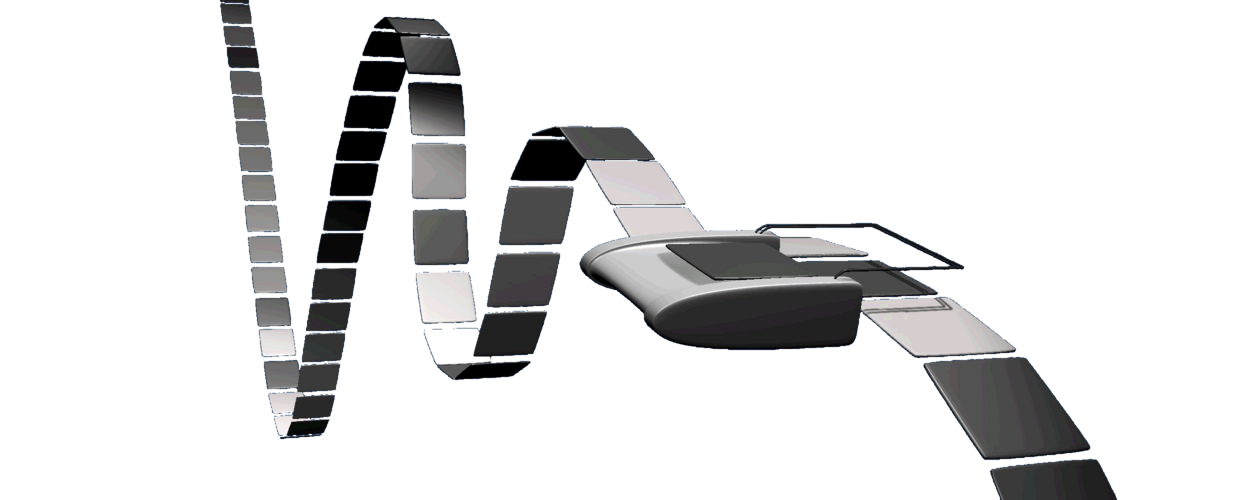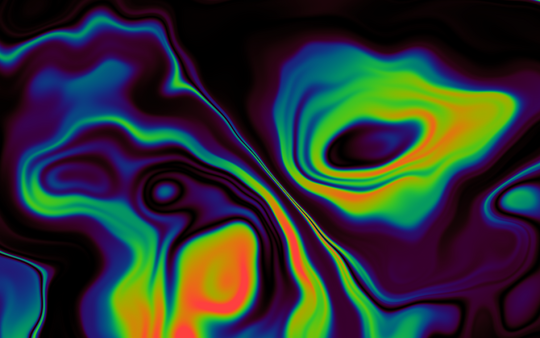- The results show that certain hydrodynamic phenomena are undecidable, which is a new manifestation of the turbulent behaviour of fluids.
- The combination of a variety of areas of mathematics has been key to achieving this milestone.
- The authors are Robert Cardona (UPC-BGSMath), Eva Miranda (UPC-CRM), Daniel Peralta-Salas (ICMAT-CSIC) and Francisco Presas (ICMAT-CSIC).
In ‘Proceedings of the National Academy of Sciences’ (PNAS)
Seven years ago, Fields medallist Terence Tao, famous for his broad view of current mathematical research, proposed a new approach to solving the famous problem of Navier-Stokes equations, which describe the motion of fluids. Eva Miranda (UPC-CRM) saw the post on Tao’s blog and it caught her attention, as at that time she was finishing a work with Daniel Peralta-Salas (ICMAT-CSIC) and Robert Cardona (CRM-BGSMath-UPC) on fluids in border areas. Now, also together with Francisco Presas (ICMAT-CSIC), the research team has managed, for the first time, to build solutions for a fluid capable of simulating any Turing machine, inspired by the Tao approach. The result is published today in the journal Proceedings of the National Academy of Sciences (PNAS).
A Turing machine is an abstract construction capable of simulating any algorithm. It receives, as input data, a sequence of zeros and ones and, after a number of steps, returns a result, also in the form of zeros and ones. The fluid studied by the researchers can be considered as a water machine; it takes as input data a point in space, processes it -following the trajectory of the fluid through that point- and offers, as a result, the next region to which the fluid has moved. The result is an incompressible fluid with no viscosity -the Navier-Stokes equations do consider viscosity- in dimension three. This is the first time that a water machine has been designed.

Turing machine model
One of the main consequences of the result is that it allows us to prove that certain phenomena of hydrodynamics are undecidable. For example, if we send a message inside a bottle, we cannot guarantee that it will reach its recipient. Something similar happened to the 29,000 rubber ducklings that fell from a freighter during a storm and got lost in the ocean in 1992: no one could predict where they would appear. That is, there is no algorithm to ensure that a fluid particle will pass through a certain region of space in finite time. “This inability to predict, which is different from that established by chaos theory, is a new manifestation of the turbulent behaviour of fluids,” say the researchers.
“In chaos theory, unpredictability is associated with the extreme sensitivity of the system to the initial conditions -the flutter of a butterfly can generate a tornado- in this case, it goes further: we prove that there can be no algorithm that solves the problem, it is not a limitation of our knowledge, but of the mathematical logic itself” emphasize Miranda and Peralta-Salas. This shows the complexity of the behaviour of fluids, which appear in various fields, from the prediction of atmospheric weather to the dynamics in flows and waterfalls.
On its relationship to the Navier-Stokes problem, included in the Clay Foundation’s list of Millennium Problems, researchers are cautious. “Tao’s proposal is, at the moment, hypothetical,” they say. The idea is to use a water computer to force the fluid to accumulate more and more energy in smaller and smaller regions, until a singularity is formed, that is, a point at which the energy becomes infinite. The existence or not of singularities in the equations is precisely the problem of Navier-Stokes. However, “at the moment this cannot be done for the Euler or Navier-Stokes equations,” say the scientists who have discussed their results with Tao.
The water machine designed by Cardona, Miranda, Peralta-Salas and Presas -the first of its kind- is guided by Euler’s equations, but its solutions have no singularities. Various geometry, topology and dynamic systems tools developed over the last 30 years have been key to its design. Specifically, it combines symplectic and contact geometry and fluid dynamics, with computer science theory and mathematical logic. “It has taken us more than a year to understand how to connect the various cables of the demonstration,” the scientists conclude.

From left to right and from top to bottom, the authors of the work: Daniel Peralta, Robert Cardona, Eva Miranda and Francisco Presas.
Reference: Constructing Turing complete Euler flows in dimension 3 by Robert Cardona (UPC), Eva Miranda (UPC), Daniel Peralta-Salas (ICMAT) and Francisco Presas (ICMAT). Publication: PNAS 2021.

